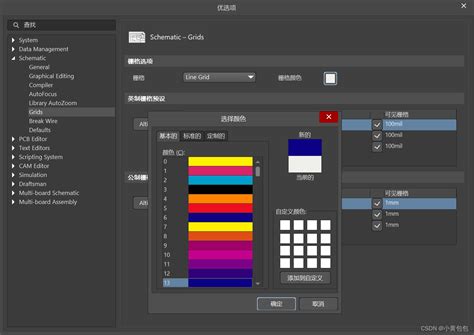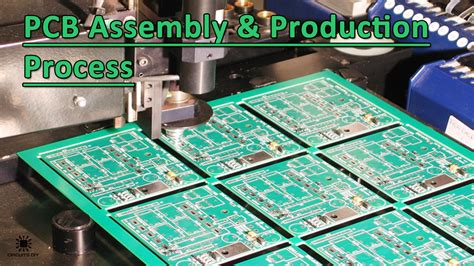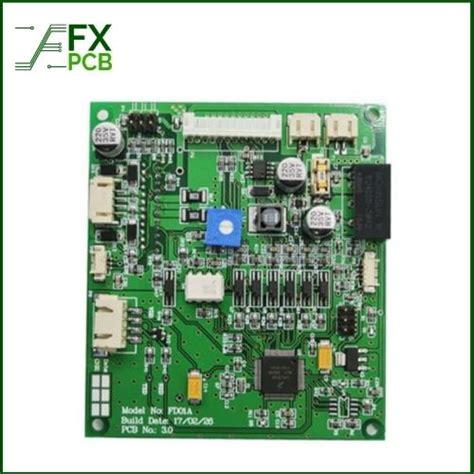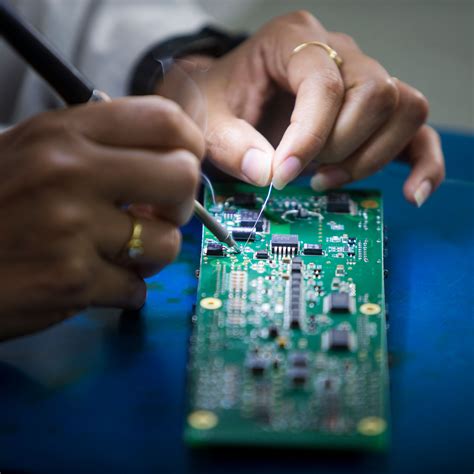Mastering Creation: A Guide to PCB Assembly Success
Key Takeaways
Understanding pcb assembly (often referred to as PCBA) is crucial for anyone involved in electronics design and manufacturing. It encompasses various stages, from the conceptualization of the circuit board to the final assembly of electronic components. The fundamental principles revolve around ensuring that each component is correctly placed, soldered, and tested to meet quality standards. By recognizing the importance of these stages, individuals can enhance their creational process and improve overall efficiency.
With the right knowledge of essential tools such as soldering stations, pick-and-place machines, and inspection equipment, one can streamline their pcb assembly process significantly. These tools not only facilitate accurate component placement but also minimize errors—which can be detrimental in high-precision environments. Additionally, understanding techniques for efficient pcb design and layout is key to ensuring that circuit boards are both functional and manufacturable.
In navigating through common challenges that arise during PCBA, such as misalignment or inadequate solder joints, practitioners can adopt well-established strategies for troubleshooting. Employing quality control measures throughout the assembly stages ensures high-quality results, reinforcing trust in the final product. By staying updated with innovations in PCB technology, creators can remain competitive and informed about future trends that may influence their assembly processes. This knowledge serves as an invaluable asset for achieving successful outcomes in pcb assembly projects.
Understanding PCB Assembly: The Fundamentals of Creation
PCB assembly, or PCBA, is a critical component of electronics manufacturing that involves connecting various electronic components to a printed circuit board (PCB). The process transforms a simple board into the nucleus of devices, powering everything from household gadgets to complex industrial machines. Understanding the fundamentals of pcb assembly is essential for anyone looking to delve into electronics design and production.
At its core, PCB assembly encompasses several stages, each with its unique set of practices and tools. Initially, the design phase involves creating a schematic diagram that maps out the layout of components on the board. Once the design is finalized, it leads to the fabrication of the PCB itself, which must meet electrical and mechanical specifications.
After fabrication, components are prepared for soldering. Here’s where essential tools come into play. A properly equipped workspace typically includes:
| Tool | Purpose |
|---|---|
| Soldering Iron | Joins electronic components to the PCB |
| Stencil | Ensures precise application of solder paste |
| Pick-and-Place Machine | Automates component placement on PCBs |
| Inspection Devices | Allows for quality checks during and after assembly |
The actual pcb assembly process can involve either manual or automated techniques. Manual soldering may be employed for smaller production runs or repairs, while automated processes like surface mount technology (SMT) are preferred for larger batches due to their efficiency and accuracy.
Assembling a PCB isn’t without challenges; issues like component misalignment or improper solder joints can arise. Being aware of these common pitfalls and employing judicious quality control measures ensures high-quality outcomes in PCBA processes. Ultimately, mastering these fundamentals sets a strong foundation for advancing towards sophisticated techniques and innovations in PCB technology.
Essential Tools and Materials for Successful PCB Assembly
To achieve effective pcb assembly, having the right tools and materials is paramount. At the core of this process, a quality printed circuit board (PCB) serves as a foundation for your designs. Essential tools include a reliable soldering iron, which is crucial for ensuring proper connections between components. Investing in solder with the appropriate alloy composition can significantly enhance the durability of the assembled pcba.
Moreover, various hand tools such as tweezers, wire strippers, and a multimeter are essential for both assembly and troubleshooting during the creation process. A good set of basic components — including resistors, capacitors, and integrated circuits — should also be on hand to facilitate smooth progression through your projects.
“Remember to organize your workspace; a clutter-free environment contributes to an efficient assembly process.” This tip is vital when managing multiple components during pcb assembly.
Additionally, utilizing tools like a microscope or magnifying glass can greatly assist in inspecting intricate connections that might otherwise go unnoticed. Aspects such as safety goggles should not be overlooked as they provide necessary protection during soldering or cutting.
Incorporating modern technologies such as automated pick-and-place machines can also streamline your workflow, ensuring precision in the placement of components. Emphasizing both quality materials and well-calibrated tools will ultimately lead to high-quality results in your pcba projects.
Techniques for Efficient PCB Design and Layout
To achieve remarkable results in PCB assembly (PCBA), focusing on effective design and layout techniques is essential. One of the foundational approaches is to utilize proper schematic capture, which helps in laying out the components logically, preventing errors and enabling a smoother transition to the physical design. When creating your layout, consider the component placement—placing critical components as close as possible to minimize signal path lengths can significantly enhance performance.
Incorporating a clear and organized routing strategy is also vital. This entails making decisions about trace widths, proper spacing, and avoiding abrupt changes in direction to reduce electromagnetic interference and maintain signal integrity. Using specialized design software can aid in automating some aspects of this process, allowing for real-time adjustments that enhance efficiency.
Moreover, it’s crucial to include ground planes in your designs. These serve not only as a reference point for voltage but also play a key role in minimizing noise by reducing inductance. Ultimately, adopting these techniques will streamline your PCB assembly (PCBA) process, contributing towards achieving high-quality results while reducing production errors and rework.
Step-by-Step Guide to the PCB Assembly Process
In the world of pcb assembly, understanding each stage of the process is vital for achieving stellar results. The pcba process begins with preparation, where the printed circuit board is designed and components are selected based on functionality and size. Once a design is finalized, the next step involves applying solder paste to the designated pads on the board; this paste serves as a binding agent for electronic components. After soldering, these components are placed onto the board, often using automated machinery to ensure precision and speed.
Following component placement, reflow soldering is typically employed, which involves heating the board to melt the solder and create a solid electrical connection. After cooling, it’s crucial to conduct a thorough inspection—a stage where both visual checks and automated inspection systems can identify defects or misplacements before they progress too far in production. Additionally, testing methods such as in-circuit testing (ICT) or functional testing ensure that each assembly meets quality standards.
Navigating through these steps with diligence can significantly enhance efficiency in your pcb assembly process while reducing defects and ensuring high-quality output. Each phase contributes to a successful outcome, balancing creativity with technical precision in your creation of reliable electronic components.
Common Challenges in PCB Assembly and How to Overcome Them
In the realm of pcb assembly, several challenges can impede the efficiency and quality of the pcba process. One commonly encountered issue is design complexity. As designs become more intricate, the likelihood of errors increases, which can lead to costly rework. To tackle this, effective design for manufacturability (DFM) principles should be adhered to from the outset. Incorporating simulation tools during the design phase can reduce unexpected complications during assembly.
Another major challenge is the selection of appropriate materials and components. Incompatible materials can lead to issues such as poor solderability or thermal management problems. Engaging with reliable suppliers and employing thorough testing of components prior to assembly are vital steps in mitigating these risks.
Soldering techniques also pose a challenge; improper soldering can result in cold joints or bridging between pads. Training operators on best practices and utilizing automated soldering processes where applicable can significantly improve outcomes.
Finally, managing the logistics of pcb assembly, including supply chain delays or improper component handling, can disrupt timelines and increase costs. Utilizing robust inventory management software helps in tracking parts effectively, preventing shortages, and ensuring that the assembly process remains streamlined.
By addressing these challenges with a proactive approach and applying best practices, manufacturers can enhance their production quality and achieve successful pcba projects efficiently.
Quality Control Measures for High-Quality PCB Assembling
Implementing quality control measures in the pcb assembly process is essential for ensuring the reliability and performance of electronic products. The first step in establishing effective quality control is to set clear standards and specifications that the finished pcba must meet. Regular inspections at various stages of assembly—such as during soldering, component placement, and final testing—help identify any potential defects early on. Utilizing advanced technologies such as automated optical inspection (AOI) can enhance the ability to spot discrepancies that manual checks might miss, thereby increasing overall efficiency.
Moreover, incorporating statistical process control (SPC) allows manufacturers to monitor key metrics and process variations in real-time. This data-driven approach enables teams to make informed adjustments on-the-fly, fostering a culture of continuous improvement. Training operators on the importance of quality—alongside adopting a robust documentation system—ensures that every member involved understands their role in achieving high-quality outputs. Ultimately, a commitment to stringent quality control not only reduces waste and costs but also leads to greater customer satisfaction by delivering a final product that meets or exceeds expectations.
Innovations in PCB Technology: Future Trends and Best Practices
The landscape of pcb assembly is continuously evolving, driven by remarkable innovations that aim to enhance efficiency and quality in the production process. One significant trend is the integration of advanced automation technology, which streamlines the pcba processes, reducing human error while enabling faster turnarounds. Additionally, companies are increasingly utilizing smart manufacturing techniques, such as the Internet of Things (IoT), to monitor production in real-time. This level of connectivity allows for immediate adjustments, thus promoting a higher standard of quality control. Furthermore, the adoption of environmentally friendly materials is becoming a norm, reflecting a growing trend towards sustainability in pcb assembly practices. As designers and engineers continue to experiment with new substrates and conductive inks, we are likely to see an enhancement in the functionality and reliability of pcba products. Another significant innovation is the rise of 3D printing technology, which offers unparalleled design flexibility and reduces production times for complex components. Embracing these innovations not only positions manufacturers at the forefront of competition but also ensures that they meet evolving market demands effectively.
Conclusion
As we draw our exploration of PCB assembly to a close, it is essential to reiterate the key points that contribute to achieving success in this intricate field. The journey of PCBA—from understanding the basics of creation to implementing advanced techniques—highlights the importance of meticulous planning and execution. By employing the right tools and materials, practitioners can streamline their processes, enhancing both efficiency and quality. Moreover, being aware of common challenges allows for proactive measures, ensuring components are assembled correctly and meet stringent quality standards. In addition, staying abreast of innovations in PCB technology will keep your creations relevant in an ever-evolving landscape. Ultimately, mastery in PCB assembly is not just about technical skills; it also necessitates a commitment to continuous improvement and adaptation to emerging trends. This comprehensive understanding will not only enhance your capabilities but also elevate the quality of your projects as you strive for excellence in every PCBA endeavor.
FAQs
What is PCB assembly?
PCB assembly refers to the process of connecting electronic components to a printed circuit board (PCB) to create a functional electronic device. This encompasses multiple steps, including component placement, soldering, and assembly inspection.
Why is quality control important in PCB assembly?
Quality control is essential in pcb assembly because it ensures that the final product meets the required specifications and functions reliably. Implementing quality measures can minimize defects and reduce the likelihood of failures in end-use applications.
What tools are essential for successful PCBA?
Critical tools for successful PCBA include soldering stations, printing machines for solder paste application, pick-and-place machines for component placement, and inspection equipment like AOI (Automated Optical Inspection) systems.
How can I overcome challenges in PCB assembly?
Common challenges in pcb assembly, such as misalignment or solder defects, can be overcome by following best practices in design and using high-quality materials. Training staff on proper techniques and investing in automated processes can significantly enhance precision.
What are recent innovations in PCB technology?
Recent innovations include advancements in materials that enhance thermal conductivity and flexibility. Emerging technologies like AI-driven inspection methods are also improving efficiency and accuracy in the assembly process.







